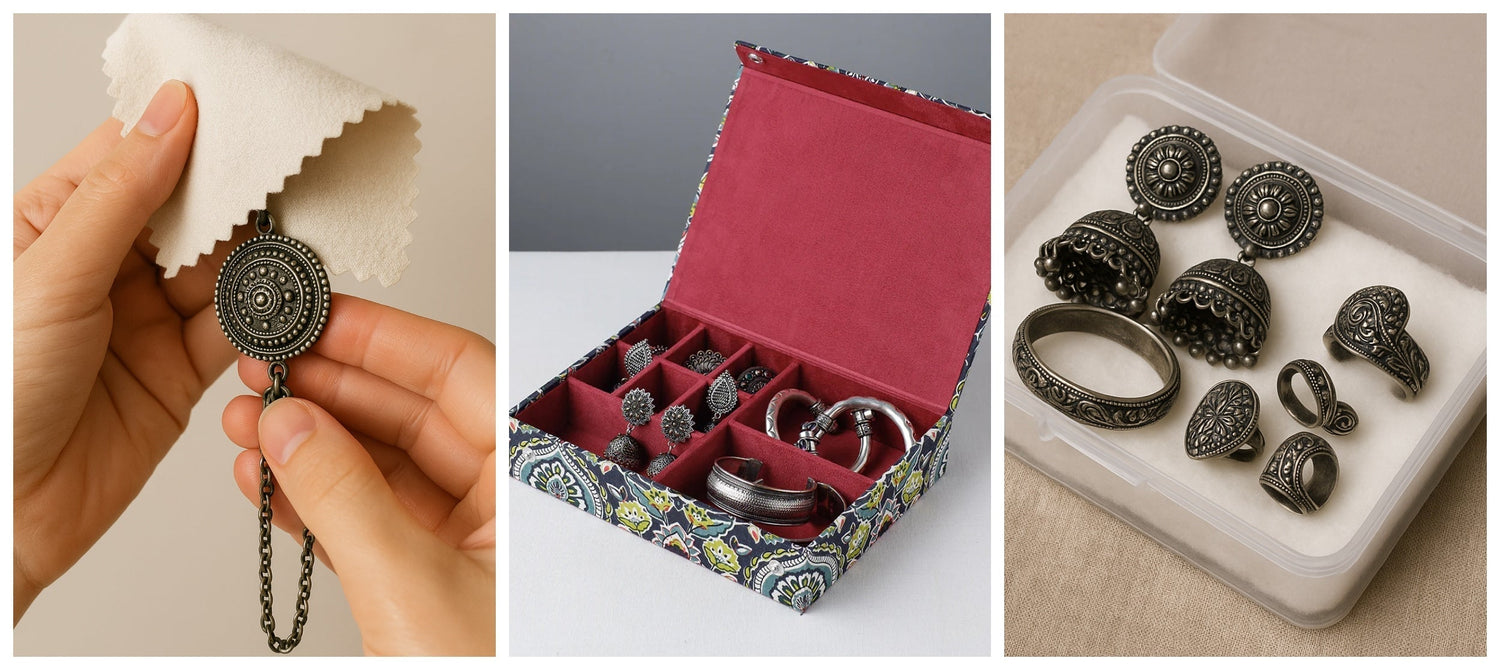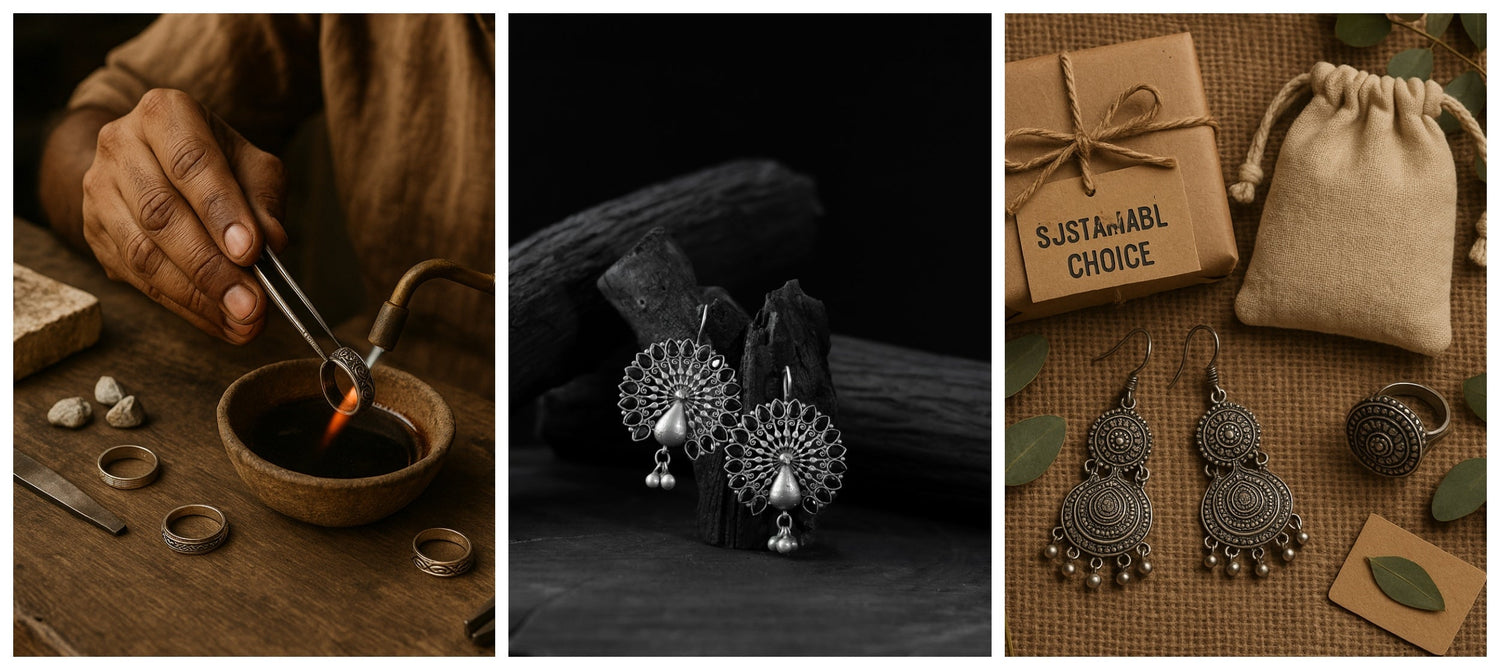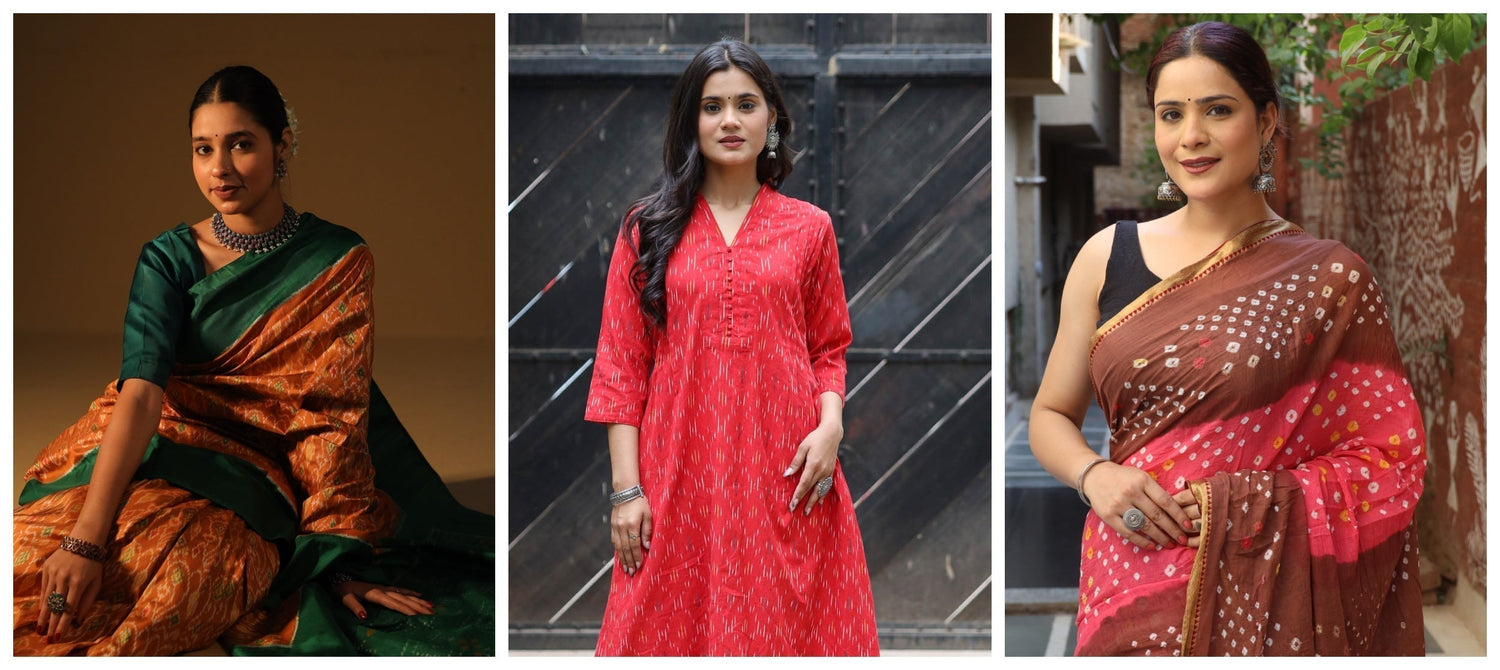India has a rich heritage of ornaments and accessories. Every region in our country reflects their identity through different types of ornaments. However, silver oxidised jewellery among these has managed to capture hearts across generations. It has a unique charm in its rustic look, which the modern generation loves to flaunt.
Artisans highlight their culture and craftsmanship through these silver accessories. It is much more than a piece of fashion accessory – it is a living piece of heritage. These delicate oxidised jewellery pieces tell a story of identity, artistry, and tradition. Let’s explore the rich history, and cultural significance of oxidised earrings, necklaces, and other baubles across India in this blog.
The Origins And Evolution Of Oxidised Silver Jewellery In India
The trend of oxidised silver trinkets is not something new. These have their roots embedded in tribal life and ancient civilizations. Historians have found many of these ornaments in excavation sites of Indus Valley civilization such as Rakhi Garhi. A variety of handmade oxidised necklaces, earrings, and bangles was discovered on the site. They are known to be as old as 5000 years. While gold was known as the metal of the royals, silver was the metal of the people.
This is the reason many tribes in India still prefer silver over gold. You can find unique tribal aesthetics in trinkets in different parts of India. From the ancient times of Harapan civilisation to the tribal artisans of Rajasthan or in Ladakh, it is worn in daily life, rituals, and ceremonies. Even today, you can find elaborate patterns on silver chains for women worn by tribals. It is indeed an inseparable part of India’s decorative tradition.

Silver ornaments were not originally oxidised. It happened over time with natural ageing. However, artisans started to intentionally oxidise silver ornaments to improve the texture and highlight intricate details of the design. They use sulfur for this, creating a layer of silver sulphide on top for that darkened vintage effect. And this trend became highly popular defining Indian oxidised ornaments in today’s fashion. You can find various imitation jewellery with oxidised touch popular among the young generation.
Cultural Significance Of Oxidised Silver Ornaments In Indian Traditions
You can find a vast cultural landscape in India when it comes to ornaments. Each piece of silver oxidised jewellery reflects the local aesthetics, materials, and methods. There are many regional styles when it comes to oxidised jewels for men and women. Here are some of the popular ones,
-
Rajasthan – Bold and Beautiful
This state is known for its bold tribal statements. They offer chunky oxidised silver necklaces, earrings, and bangles. Tribes such as Banjara and Rabari are known for their large nose rings, thick anklets, engraved bangles, chunky rings, and layered necklaces. Paired with colourful fabrics, silver baubles here signify status and identity. Not just these, Rajasthan is also popular for meenakari work on silver jewels.

-
Gujarat – Silver fusion
The Kutch region of Gujarat is the ultimate fusion of embroidery and silver. You can see unique craftsmanship with ornaments made with beads, glasswork, and embroidery. Handcrafted Kada, Borla, and jhumka earrings are often paired with vibrant attire during marriage rituals and folk festivals.

Image credit:- Pinterest
-
Odisha – The art of Tarakashi
This state is popular for Tarakashi, or the delicate silver filigree method. Artisans give an oxidised finish to pendants, hairpins, and temple jewels. Cuttack is globally recognised for the fine craft of transforming silver wires into lace-like patterns. These artisans use the oxidation process to highlight the patterns. They are one of the most sought-after intricate silver earrings for women in India.

-
Himachal Pradesh – Tribal Spirituality
Crafted by Kinnauri and Lauhauli communities, silver ornaments in Himachal Pradesh are much more than mere decoration. They are deeply spiritual and are believed to ward off evil powers. Members of these communities often wear headpieces and brooches with religious symbols.
Apart from these states, there are many other tribal communities in Chhattisgarh, Jharkhand, Nagaland, and Tamil Nadu. In these communities, Silver jewels are not only worn but they are also inherited and revered. It marks the different life stages such as puberty, marriage, and motherhood. Special amulets are used to ward off evil powers. Oxidised earrings and necklaces are also used to signify social hierarchy and caste affiliations.

Silver oxidised jewels: The increasing demand among modern generation
Oxidised silver necklaces and earrings have always been loved by ornament lovers. However, in recent years, this popularity has gained a lot of traction. The modern generation now prefers to wear chunky baubles made from oxidised silver over any other accessory. They pair them with Western outfits as well as Indian.

Increasing demand for Indian handloom and boho fashion has also contributed to this. Many online fashion brands are now coming up with beautiful collections catering to the needs of the modern generation. You can find intricate cuffs, bracelets, bangles, chunky necklaces, hairpieces, and earrings inspired by tribes across India. No matter if you love boho, indie or minimalist fashion, there is a silver trinket available for you. Wearing these and including them in everyday style, helps preserve the culture and traditions of ancient India.
FAQs
-
What makes oxidised silver jewellery different from regular silver jewellery?
Regular silver ornaments are treated with chemical or natural tarnishing giving it that antique dark look. It is done to highlight the design of the bauble and to give it a vintage appearance.
-
Is oxidised silver real silver?
Oxidised silver can be pure silver or 92.5 silver sterling. It is darkened through chemical treatments. However, you can also find artificial oxidised ornaments as well at cheaper prices such as German silver. It is an alloy of copper, zinc, and nickel. It is best to confirm the metal before buying from online artificial jewellery shopping sites.
-
How should I store oxidised silver jewellery?
You must store them in airtight pouches. Also, prevent any contact with perfume or water. While cleaning them avoid using regular silver polishing agents as it can affect the oxidised layer. Use a soft cloth to wipe them gently.
-
Which Indian states are known for oxidised jewellery?
Many Indian states that have strong tribal heritage are known for oxidised men’s and women’s jewellery. Some of these states are Rajasthan, Gujarat, Chhattisgarh, and Madhya Pradesh. Each region has its distinct style of oxidised trinkets.
-
How long does oxidisation last on silver jewellery?
Well, this depends on how much you wear them. Silver rings and bangles can often lose their oxidation effect. However, necklaces and, earrings for women can hold their oxidation for a long time.




